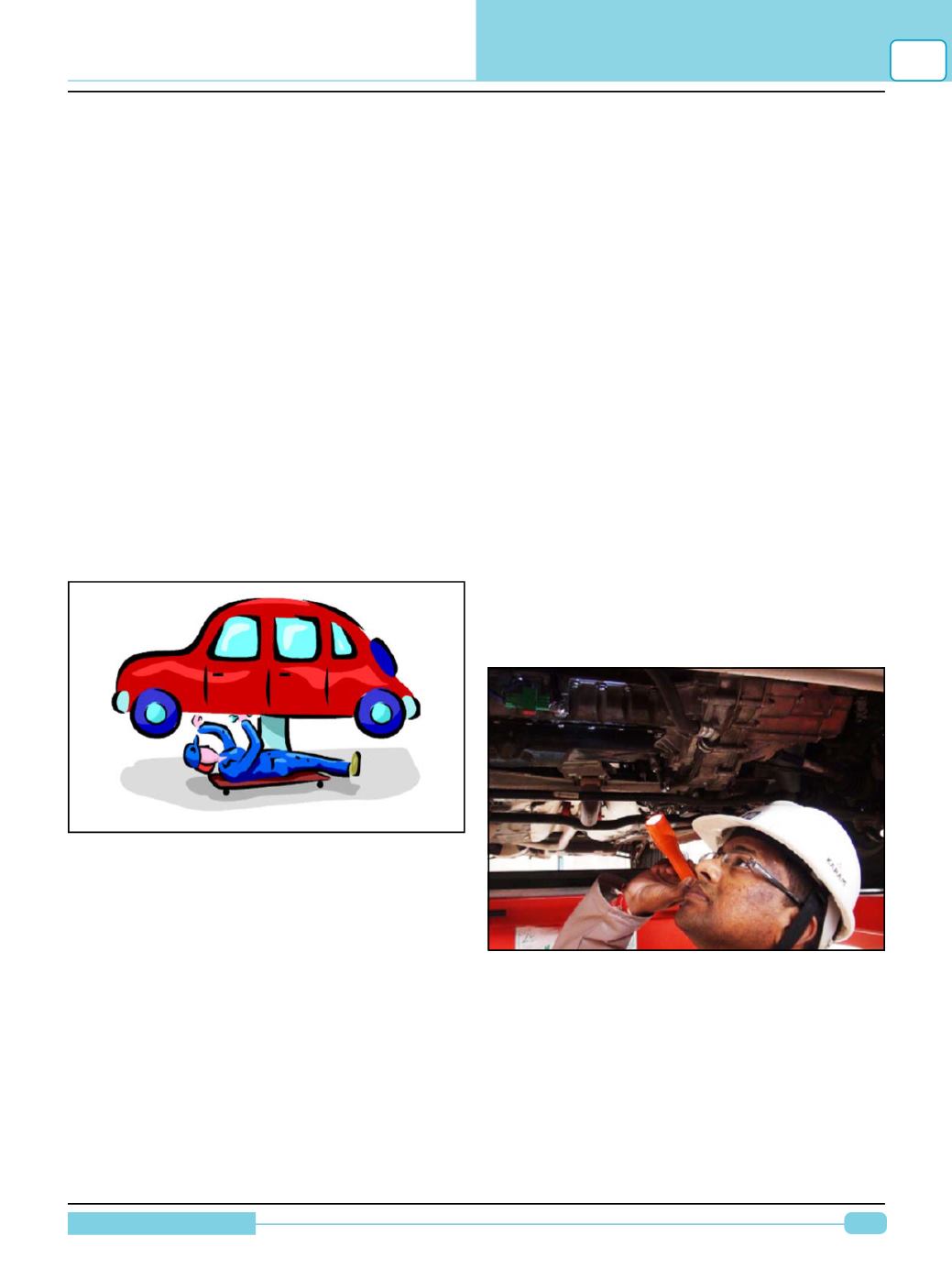

17
Diagnostic Manual
4
•
History of the system (how old/ earlier service
or repairs done)
•
Knowledge of probable cause of occurrence.
The Service Manager should complete the C-3
(Implementation of repair improvement process)
Audit form by establishing the “Root Cause” for
the all repeat complaint and Top 20 complaint cars
and also chart out the preventive actions.
Step 5: Making the Repair
Diagnostic Expert CumTrainer (DET) should en-
sure that the technicians are referring to the work-
shop manual & using special tools wherever ap-
plicable.
DET should also ensure use of appropriate check
Sheet for all cases of Top 20 and Repeat com-
plaint and keep record for future reference. Both
the symptoms and the cause of the concern need
to be repaired.
•
Do not leave loose components in the
vehicle.
•
Fitment of interior trims in the vehicle.
•
Save & clear any stored history DTC’s.
•
After the repair has been successfully
completed, the vehicle should be driven under
similar conditions that caused the original
concern.
•
Verify that the problem has been corrected.
•
Vehicle drivability or emission related
complaints are advisable to verify by short drive
test, it is helpful to have a copy of the freeze
frame parameters that were present when the
DTC was triggered.
In case of repeat complaint car, after the repairs,
the car needs to be checked for all the complaints
mentioned in the job card and also as per the
checklist. 100%of repeat complaint cars and cars
with Top 20 complaints should be test driven
before handing over to the washing team. Also, it
needs to be confirmed that no fresh concern has
appeared.
FIG.6: Making the Repairs
Step 6: Verifying the Repair
Verification or Confirmation on whether the
concern has been solved is an essential part of
the repair process. Checking the re-occurrence
of the concern by recreating the same conditions
is essential check of the diagnostic process.
•
Verify the Repairs for e.g.
•
Fitment of removed engine components.
•
Torque for nut & bolts of assemblies.
•
Locking of connectors to the sensor or
actuators
•
Clamping of battery cables on battery posts.
FIG.7 : Verify the customer concern or
problem. If the problem cannot be verified,
then the repair cannot be verified.
Step 7 : Perception Management
For concerns related to only Customer
Perceptions, the Service Adviser should check if
the issue is of perception or the customer is not
able to correctly explain his concern. If the issue
SEVENSTEPSDIAGNOSTIC APPROACH

















